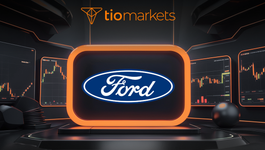SPACs Explained: Meaning, Explanation and How to Trade | TIOmarkets
BY TIOmarkets
|June 11, 2024In the dynamic world of finance, Special Purpose Acquisition Companies (SPACs) have emerged as a pivotal mechanism for companies seeking to enter public markets. This innovative approach offers a streamlined alternative to the traditional initial public offering (IPO) process, attracting both seasoned and novice investors alike. In this comprehensive guide, we delve into the essence of SPACs, their operational framework, and the nuances of trading them effectively.
Understanding SPACs
At its core, a SPAC is a shell corporation designed solely to raise capital through an IPO for the purpose of acquiring an existing company. Often dubbed "blank check companies," SPACs have gained popularity for their ability to expedite the process of taking a company public without the complexities and uncertainties of the traditional IPO route.
Formation and Structure
SPACs are initiated by sponsors—typically a group of investors or a company with expertise in a particular industry or business sector. These entities come together to form a SPAC, pooling their resources to fund the initial stages of the venture. The funds raised through the IPO are placed in a trust account, where they remain until the SPAC identifies a suitable acquisition target, commonly referred to as a "business combination."
The structure of a SPAC is designed to protect investors, as the funds in the trust account can only be disbursed to complete an acquisition or returned to investors if the SPAC is unable to secure a deal within a specified timeframe, usually 18 to 24 months.
Advantages of SPACs
SPACs offer several advantages over traditional IPOs, including speed to market, price certainty, and the expertise of the SPAC sponsors. The streamlined process allows companies to become publicly traded in a matter of months, providing immediate access to capital markets and liquidity for early investors. Additionally, the pre-determined IPO price offers certainty in an otherwise volatile market.
Trading SPACs
Trading SPACs presents unique opportunities and challenges. For investors, understanding the lifecycle of a SPAC and the implications of each phase is crucial to navigating this market effectively.
Before the Business Combination
Prior to an acquisition, SPAC shares typically trade close to the IPO price, as the actual value is pegged to the funds held in trust. During this phase, investor sentiment and speculation about potential acquisition targets can influence the stock price. Trading strategies might focus on the track record of the SPAC sponsors and the likelihood of a successful acquisition.
After the Announcement of a Business Combination
Once a SPAC announces its acquisition target, the market reaction can be volatile. Shares may surge on optimism about the target's future prospects or fall if investors deem the deal unfavorable. At this stage, thorough research into the target company's financial health, business model, and growth potential is essential for informed trading decisions.
When considering trading SPACs after the announcement of a business combination, it is crucial to assess the strategic fit between the SPAC and its target company. Understanding how the merger aligns with the SPAC's investment thesis and growth strategy can provide valuable insights into the potential performance of the combined entity. Additionally, analyzing the market's reaction to the announcement, including any price movements and trading volumes, can help investors gauge market sentiment and make informed decisions.
Post-Business Combination
Following the completion of a business combination, the SPAC transitions into the acquired company, and its shares continue to trade under a new ticker symbol. This phase marks the true test of the SPAC's value proposition, as the performance of the new entity unfolds. Investors should monitor the company's integration progress, financial performance, and strategic direction closely.
Risks and Considerations
While SPACs offer a novel path to investment and potential rewards, they are not without risks. The speculative nature of investing in a SPAC, particularly before an acquisition target is announced, requires a cautious approach.
Speculative Investments
Investing in SPACs before an acquisition is announced is highly speculative. The lack of operational history and concrete financials makes it challenging to assess the potential value of the investment.
When engaging in speculative investments such as SPACs, it is essential for investors to conduct thorough due diligence and risk assessment. This includes evaluating the track record of the SPAC sponsors, analyzing the market dynamics, and understanding the industry trends that could impact the success of the acquisition. By staying informed and proactive in their research efforts, investors can mitigate risks and make more informed investment decisions.
Dilution
Following a business combination, the issuance of additional shares can lead to dilution of existing shareholders' interests. Understanding the terms of the deal and the potential impact on share value is crucial.
Regulatory Risks
The regulatory landscape for SPACs is evolving, with increased scrutiny from regulatory bodies. Changes in regulations or enforcement actions could impact the viability and attractiveness of SPACs as an investment vehicle.
Conclusion
SPACs represent a compelling alternative to traditional IPOs, offering a faster route to public markets and unique investment opportunities. However, the complexities and risks associated with SPACs necessitate a well-informed, strategic approach to trading. By understanding the lifecycle of a SPAC, conducting thorough due diligence, and staying abreast of regulatory developments, investors can navigate the SPAC market with confidence.
At TIOmarkets, we are committed to providing our clients with the insights and tools needed to explore the vast landscape of financial opportunities, including the dynamic world of SPAC trading. Join us as we continue to demystify the complexities of the financial markets, empowering you to make informed investment decisions.
Start Trading SPACs with TIOmarkets
Ready to take your trading to the next level with SPACs? Join TIOmarkets, a top-rated forex broker, where you can trade over 300 instruments across 5 markets, including Forex, indices, stocks, commodities, and futures. Benefit from our low fees and join a growing community of 170,000+ traders in over 170 countries. Enhance your skills with our comprehensive educational resources and step-by-step guides. Don't miss out on the opportunity to trade SPACs and more. Create a Trading Account today and embark on your journey to successful trading with TIOmarkets.

Risk disclaimer: CFDs are complex instruments and come with a high risk of losing money rapidly due to leverage. You should consider whether you understand how CFDs work and whether you can afford to take the high risk of losing your money. Never deposit more than you are prepared to lose. Professional client’s losses can exceed their deposit. Please see our risk warning policy and seek independent professional advice if you do not fully understand. This information is not directed or intended for distribution to or use by residents of certain countries/jurisdictions including, but not limited to, USA & OFAC. The Company holds the right to alter the aforementioned list of countries at its own discretion.
Join us on social media

Behind every blog post lies the combined experience of the people working at TIOmarkets. We are a team of dedicated industry professionals and financial markets enthusiasts committed to providing you with trading education and financial markets commentary. Our goal is to help empower you with the knowledge you need to trade in the markets effectively.
Related Posts





